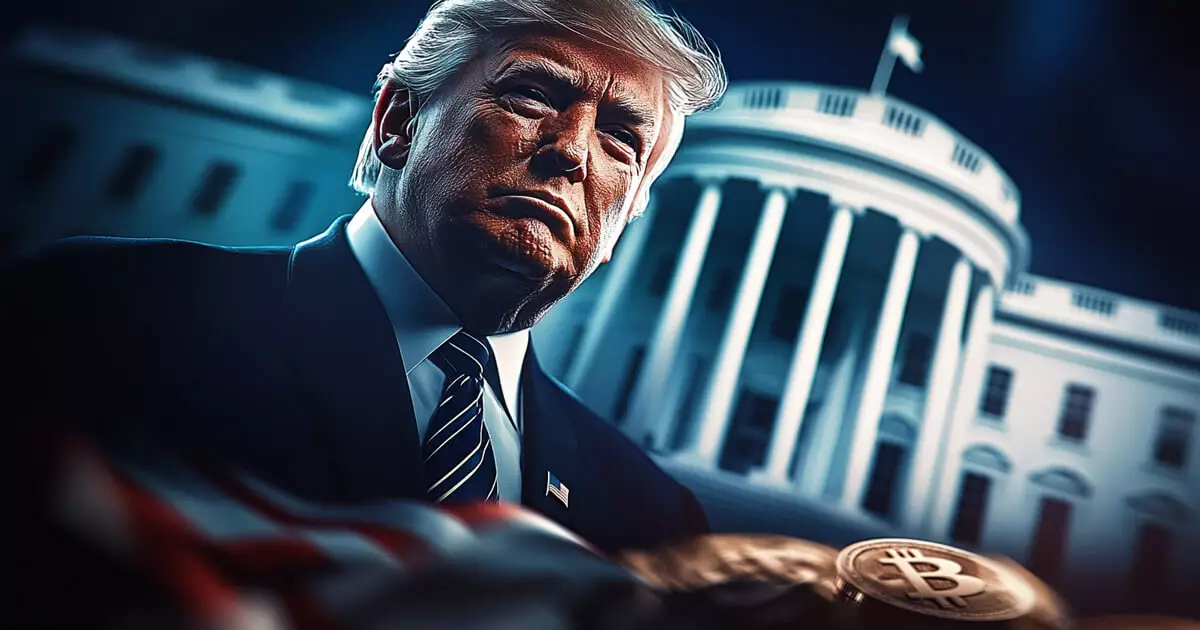In the realm of finance, the convergence of politics and technology often yields transformative changes. This paradigm is particularly visible in the world of cryptocurrency, where shifts in regulatory frameworks can significantly impact market dynamics. A recent memo from Bitwise’s Chief Investment Officer, Matthew Hougan, suggests that the potential presidency of Donald Trump heralds the advent of a “Golden Age of Crypto.” This assertion opens the door to an evaluation of how anticipated regulatory reforms can reshape the crypto landscape and what implications they hold for investors.
Following Donald Trump’s electoral victory, the crypto market responded with unprecedented vigor, underscoring the intrinsic link between political developments and financial markets. As Trump’s prospects soared, so did Bitcoin, which reached an awe-inspiring peak of approximately $75,650. As of the latest figures, Bitcoin’s valuation remained robust at around $75,300—a testament to a sudden influx of market optimism. The spike in value serves as both a reflection of investor sentiment and the underlying expectation that a more favorable regulatory environment could soon emerge.
However, it is essential to note that this market exuberance was not uniformly distributed among cryptocurrencies. While Bitcoin’s price surged, Hougan cautioned against complacency, advising investors to adopt a meticulous and selective investment strategy. Such advice is grounded in the reality that not all digital assets will benefit equally from regulatory changes, and a critical evaluation of individual projects is paramount to safeguard capital in a volatile market.
Hougan’s reflections also spotlight the current confrontational stance that U.S. regulators, particularly the Securities and Exchange Commission (SEC), have maintained towards cryptocurrency. For years, the SEC’s “regulation by enforcement” approach has cast shadows over the industry, leading to uncertainty and stifling innovation. The suggestion that a pro-crypto administration could alter this paradigm introduces hope for a more nurturing environment, enabling the sector to flourish. According to Hougan, there is a pressing need for regulatory clarity that can empower cryptocurrency developments without the constraints of legal intimidation.
Moreover, the anticipated leadership shift at the SEC could lead to an end to restrictive measures such as Operation Choke Point 2.0, marking a tactical departure from the previous administration’s hostile posture. This potential for reform signifies a pivotal moment in the roadmap toward mainstream crypto adoption and could pave the way for greater institutional investment in the sector.
In light of the regulatory adjustments, the crypto sphere stands to benefit from an influx of institutional investments—an aspect that many in the industry have long anticipated. Evidence gathered from inflows into Bitcoin exchange-traded funds (ETFs), which reportedly exceed $23 billion, reveals a burgeoning interest from institutional players and blue-chip firms. In conjunction with fundamental developments, including the forthcoming Bitcoin halving in April 2024, the momentum appears positioned for an upward trajectory.
The introduction of stablecoins and platforms like Polymarket adds further legitimacy to the crypto ecosystem, equipping it with practical applications that can secure broader adoption. Furthermore, macroeconomic influences—such as rising U.S. debt levels and the possibility of interest rate cuts—serve to enhance Bitcoin’s allure as a traditional hedge against inflation and economic volatility.
Yet, Hougan’s reminder that a supportive regulatory climate does not guarantee universal success for all crypto projects is a critical takeaway for investors. As the industry matures, transiting from speculative ventures to more established platforms, the landscape will inevitably witness the rise and fall of various players. This reality necessitates a discerning investment approach, encouraging stakeholders to channel resources toward fundamentally sound projects with a clear value proposition.
As Hougan opines, the upcoming regulatory reset is expected to establish an equitable arena where projects can succeed or fail based upon their merit. This evolving landscape will demand heightened vigilance from investors who must remain informed and agile to navigate the choppy waters ahead.
While Matthew Hougan’s memo paints an optimistic picture of the crypto sector’s future under a pro-crypto administration, it also serves as a prudent reminder of the challenges that lie ahead. Those ready to embrace the changes with a disciplined, informed strategy may well find themselves at the forefront of a dynamic financial revolution.

